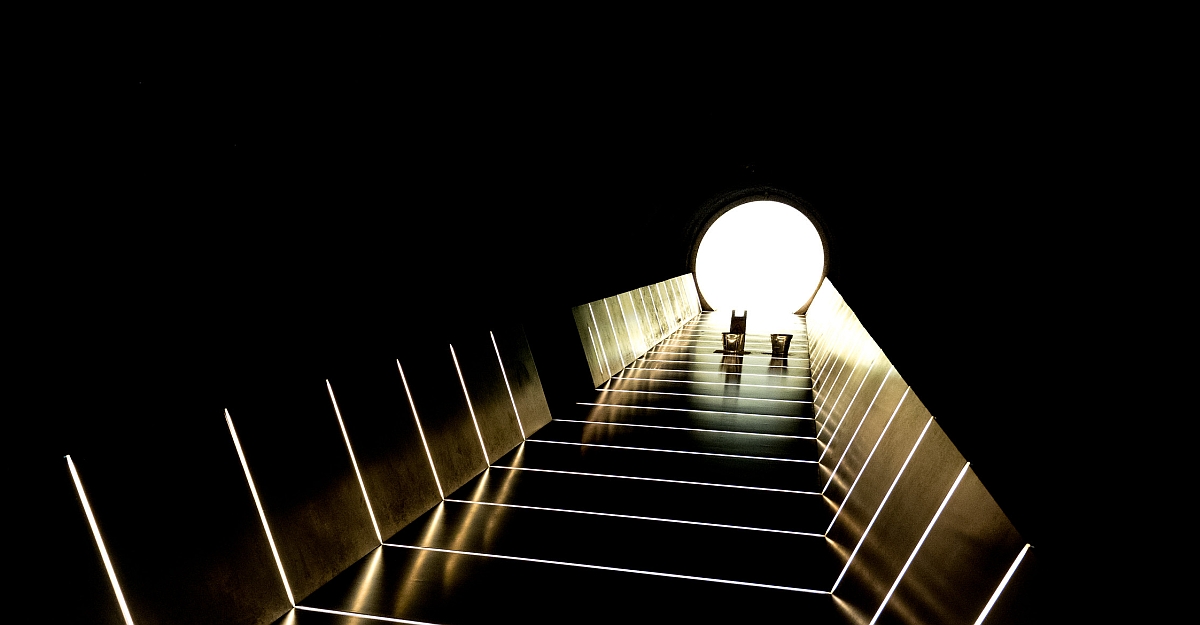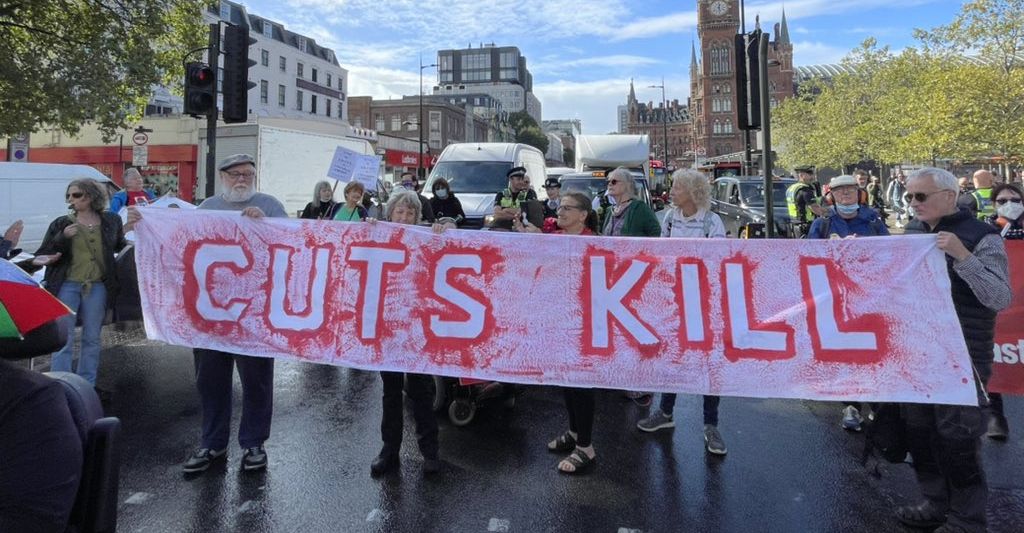The elevator doors opened like the top being peeled away on a can of sardines, and at least half a dozen squirming pink bodies blinked out at us, crammed shoulder to shoulder in the absurdly small, but extremely aesthetic, elevator. They shuffled their feet and pretended not to see me, not to see my wheelchair or the flight of stairs visible through the glass walls. No one got out, but the doors remained open, ignorantly optimistic. After a few awkward seconds, a hand darted out from somewhere in the middle of the group and jabbed the Close button.
‘Are—you—fucking—serious?’ I was with my partner at the time, and this had been the third such elevator crammed to bursting with ostensibly able bodies.
‘Yep, some people suck,’ I said with a sigh. But, in my experience, they usually didn’t, at least not really, and I was reticent to amend this generalisation. ‘I mean, not all disabilities are visible?’
The question mark that curled at the end of my words betrayed how flimsy I knew this explanation was. My experience made me sceptical of coincidence, and I suspected something more sinister was at play.
There was another whirr, another ding, and the doors again opened to reveal a crowd of stubbornly unmoving bipeds, the air around them thin and dead.
‘Nah, they’re just assholes,’ she responded, loudening her voice and timing it so that the word assholes squeezed through the doors just before they closed.
‘Just go to the next floor without me.’
‘You know I’m not going to do that,’ she sighed, glaring at the receding elevator. And I did, because she was one of the definitely not sucky ones.
I was grateful, of course, but the offer was not purely rhetorical. The truth was that I felt horribly guilty, and on a very fundamentally selfish level, I simply wanted the feeling to go away. I was there purely on her dime (my own income never having broken through the reinforced ceiling of the lowest tax bracket), and I hated that it was on my account that she was having to waste time waiting for an elevator.
*
I couldn’t deny that there seemed to be an unprecedented concentration of assholes at the Museum of Old and New Art (MONA) in Hobart, Tasmania. It’s pretty appropriate, then, that I remember seeing more asses than art.
When we’d arrived, the crowd had surged past me when the guide opened up the door to the tunnel entrance, even though I’d been put at the front of the queue because my mobility impairment had been flagged on my booking. At the other end of the tunnel, they were all pressed against the closed door like cattle jostling at a feed gate, and my chair put me at perfect butt height. It might have been captioned: ‘Rich ass(holes)’; material: assorted textiles, hair, skin, organic matter.
The guide had to raise his voice over the din to deliver his contracted welcome message. For a moment, the babble decreased politely in volume, but beyond this, no one seemed to register his presence at all. He began to fade, dissolving into the thick shadows of the tunnel. Before he disappeared entirely, he used his shadow-hand to open the door to the main hub of the gallery. The mass of butts went surging forward, like great, wobbling bubbles rushing towards the mouth of a beer bottle.
Inside the main lobby, my mouth fell open. I blinked, assuming that my eyes were just struggling to discern the scale and depth of the unfamiliar space—but, for once, they were not mistaken. The architecture was astounding. Founder David Walsh has called MONA ‘a subversive adult Disneyland,’ while Franklin and Papastergiadis describe a ‘gallery space resembling something from Alice in Wonderland.’ It was, indeed, otherworldly, but with an ominous chill and an intimidating seriousness typically absent from representations of the world down the rabbit hole. I was in a huge sandstone room, seemingly carved into the cliff itself. Great curvatures of bare rock swept out from me on all sides, gently illuminated by lights studded discreetly into the floor. The space made the other museum guests look tiny, like they were just little black beetles being cupped by some huge subterranean palm, liable to be crushed at any moment. The spectacle bounced reciprocally back into my eyeballs, and I knew that I, too, must be tiny—an ant, a bug, a minute, scurrying insect that could be crushed at any moment, reduced to a red smear like a smacked mosquito.
One end of the space was occupied by a glossy bar, and a scattering of eclectic, vintage-style armchairs. The furniture did little to soften the austere architectural space, and I felt again the permeability of my skin and the fault lines where my bones would snap.
There was also a sound: a rhythmic shook shook shook, like the measured tempo of a distant tide. I wheeled up the expansive hall to see its origin. I saw a gigantic alcove cut into the sandstone, and words nearly eight metres wide falling through the air in huge, crystalline characters. Each letter was made up of thousands of falling water droplets that sparkled like Swarovski rhinestones, disappearing, shook, when they hit the ground. For a long moment, I just watched the shimmering words fall through space, overwhelmed by the scale of both the piece—Bit Fall (2016) by Julius Popp, I later learned—and the gallery itself. When I was able to formulate words, it was not to articulate some profound response to the piece, but just to say:
‘What the fuck.’
My voice did not lift into a question at the end, since a question would indicate that there was some unknown, or at least an ambiguity to the known that could lead to genuine surprise. No, my words fell straight down like the glittering letters of the artwork before me. But they did not glitter.
They were bloated, like the millions of coloured bodies discarded along the transatlantic trade routes for over four centuries; they were scarred and disfigured, like the ‘monsters’ with twisted legs that still can’t lift themselves up from the treacly shadows to reveal themselves as just human beings; they were dull, like the coins we keep in our wallets, the coins stamped with the face of the current monarch.
In ‘The global rise of private art museums: a literature review,’ the authors ask whether ‘the global rise of private museums is in fact really global or whether the private museum boom ultimately follows and extends established geopolitical hierarchies’. But what does a hierarchy look like? From our individual bodies it can be hard to tell. They are like a shimmer at the edge of vision, a shadow that scatters beneath light. But, sometimes, the form of that amorphous spectre can be partly revealed by a few strokes of paint—or a curvature of stone, or a carefully developed photograph, or an arrangement of pixels on a screen.
The mediums of art are historically in flux, but the function remains the same: to fix, to make still, to capture the outline of that shimmer, that formless form that borders every moment of our perception. This function is often a major factor driving social change—and it seems if that social change is ultimately to be equitable, art should be freely accessible for as many people as possible.
This is not to say that MONA, as a privately owned art gallery, is inherently a social evil. For instance, in 2012, then-premier Lara Giddings applauded the gallery’s ‘Dark MOFO’ festival for providing ‘a much needed economic boost’ to the island state during the ‘traditionally quiet winter period.’ Increasing regional economic health undeniably leads to social good, but at what cost? The $35 admission? Or much more? Accessibility is never singular. It is more than a ramp, or a vacant elevator, or a subsidised entry fee. It is a thing that must perpetually change shape, a light that chases the liquid shadow cast by the always complex and multifaceted forms of disadvantage. A narrow conception of accessibility will not eradicate disadvantage, but merely cause it to shift, to condense in a place where the light does not fall.
I cannot say that the commercialisation of art dilutes its social functions, or that it impoverishes the quality of art itself by reifying the narrow categories of taste decided upon by those with enough social privilege to possess immense wealth—a group that excludes the vast majority of disabled people, members of the LGBTQIA+ community, and people of colour. I cannot say any of these things without also saying that artists need to eat, and that adequate monetary compensation is a pillar of viable careers in the arts, and that the proliferation of the arts might ultimately represent a step towards a more self-reflexive society, and one with perhaps less generationally entrenched patterns of social inequities.
No. I can only tell you, in the words of Joan Didion, ‘how it felt to me.’ I can only tell you what I saw, heard, touched, smelt. I can only tell you of the sound: Shook shook shook, like a whisper, saying: Not for you. Not for you. Not for you.
Image: Jorge Láscar



